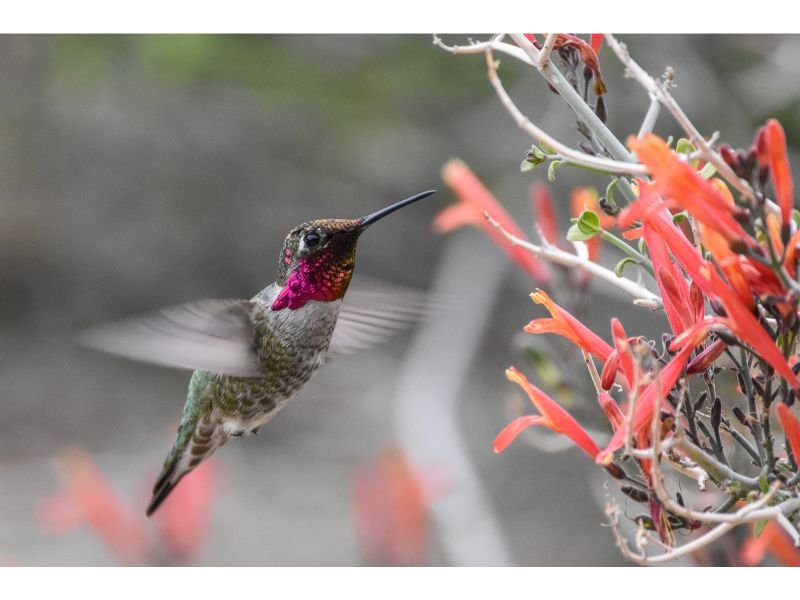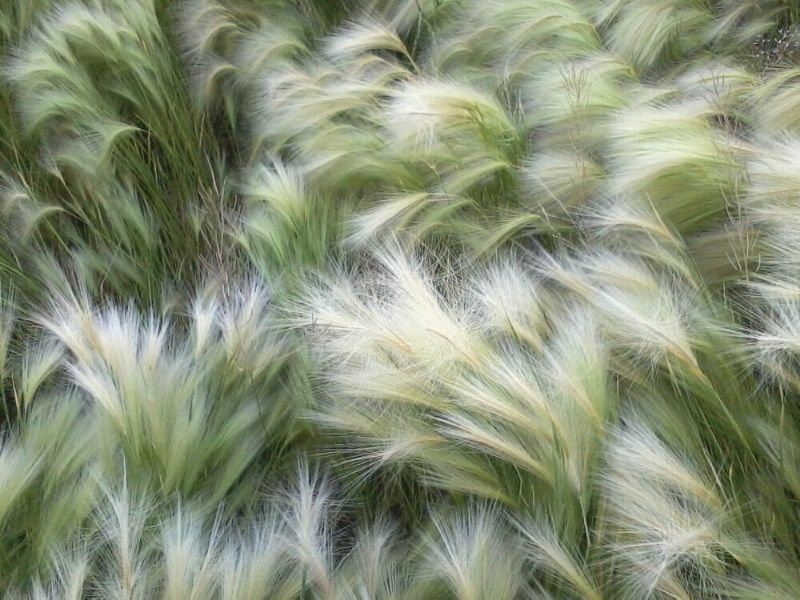Table of Contents
Introduction
Welcome to the world of Chaenomeles × superba ‘Cameo,’ an exquisite and versatile addition to your garden. In this chapter, we embark on a journey to discover the essence of this remarkable plant, understand its significance in gardening, and unveil the purpose of this comprehensive guide.
What is Chaenomeles × superba ‘Cameo’?

Chaenomeles × superba ‘Cameo,’ commonly known as flowering quince, is a deciduous shrub that belongs to the Rosaceae family. This captivating plant thrives in USDA zones 4 to 8, reaching a height of 3 to 4 feet and spreading gracefully over an area of 4 to 5 feet. But what truly sets ‘Cameo’ apart is its enchanting appearance, with peach-pink blooms that adorn your garden from March to April, creating a picturesque scene that is sure to captivate the eye.
Importance of Chaenomeles × superba ‘Cameo’ in Gardening
The role of Chaenomeles × superba ‘Cameo’ in gardening cannot be understated. It brings beauty, resilience, and versatility to your outdoor space. As a flowering quince, it not only graces your garden with its delicate blossoms but also offers an array of practical benefits. ‘Cameo’ can be used as a hedge, a specimen plant, or even integrated into garden borders, elevating the aesthetics of any landscape.
Taxonomy and Characteristics
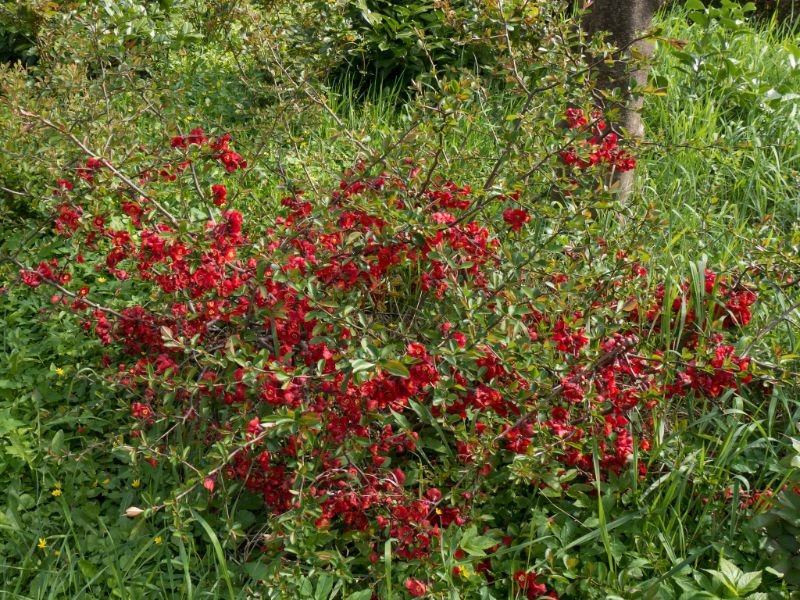
we dive into the fascinating world of Chaenomeles × superba ‘Cameo’ by exploring its taxonomy and unraveling its distinctive characteristics. This deeper understanding will provide you with valuable insights into the plant’s identity and appearance.
Taxonomic Classification
Let’s begin with a journey into the botanical classification of Chaenomeles × superba ‘Cameo.’ Taxonomy, the science of categorizing living organisms, helps us place this captivating shrub within the grand tapestry of the plant kingdom.
- Kingdom: Plantae
- Phylum: Angiosperms (Flowering Plants)
- Class: Eudicots
- Order: Rosales
- Family: Rosaceae (Rose Family)
- Genus: Chaenomeles
- Species: × superba
This scientific classification not only reveals the plant’s lineage but also highlights its connection to other well-known members of the Rose family. Understanding this taxonomy is like unlocking the door to ‘Cameo’s’ botanical heritage.
Physical Characteristics
Now, let’s turn our attention to the physical appearance of Chaenomeles × superba ‘Cameo.’ Paint a mental picture as we delve into the details of this shrub’s size, shape, and floral allure.
- Size: ‘Cameo’ typically reaches a modest height of 3 to 4 feet, with an equally graceful spread of 4 to 5 feet. Its compact form makes it an excellent choice for various garden settings.
- Twigs: The twigs of this deciduous shrub are often adorned with spiny tips, adding a touch of rugged elegance to its overall aesthetic.
- Flowers: Picture your garden bathed in the delicate beauty of ‘Cameo’s’ peach-pink blossoms. These charming flowers, with a diameter of up to 2 inches, burst into bloom before the leaves fully unfurl, creating a breathtaking spectacle in early spring.
The physical characteristics of ‘Cameo’ set the stage for its role as both an ornamental gem and a practical addition to your garden.
Bloom Time and Appearance
For garden enthusiasts, the timing and appearance of a plant’s blossoms are of utmost importance. Now, let’s delve into the specifics of Chaenomeles × superba ‘Cameo’s’ bloom.
- Bloom Time: ‘Cameo’ takes center stage in your garden from March to April. As spring awakens, these enchanting blossoms burst forth, providing a visual feast for your eyes.
- Flower Description: Imagine petals that blush with a delicate peach-pink hue. ‘Cameo’ graces your garden with these showy and elegant flowers, making it a standout choice for those seeking to add a touch of romance to their outdoor spaces.
As we conclude this chapter on taxonomy and characteristics, you now possess a deeper understanding of the botanical lineage and physical allure of Chaenomeles × superba ‘Cameo.’ Armed with this knowledge, you’ll be better prepared to cultivate and appreciate this remarkable plant.
Growing Zones and Conditions
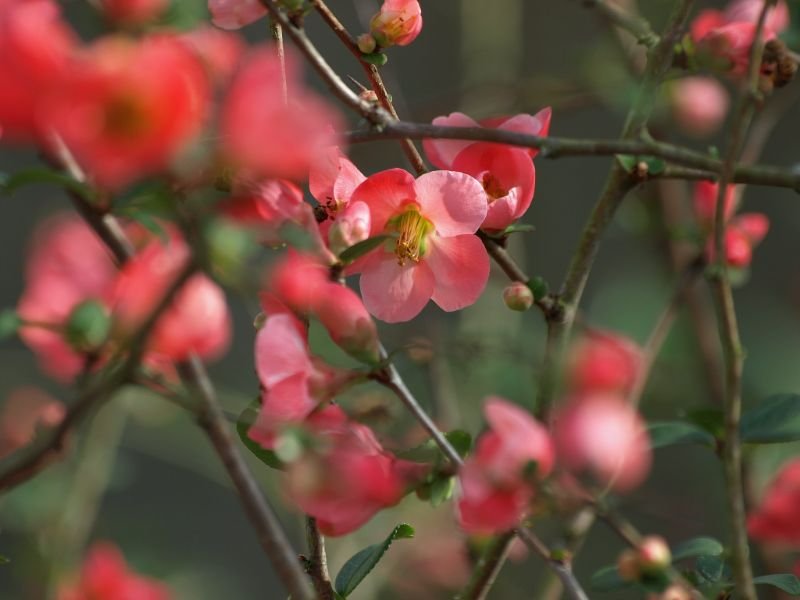
In this chapter, we embark on a journey to discover the ideal conditions for cultivating Chaenomeles × superba ‘Cameo.’ Understanding the specific requirements of this remarkable plant is essential to ensure its thriving presence in your garden.
Suitable Growing Zones
Before you embark on your gardening adventure with ‘Cameo,’ it’s crucial to know where it will flourish best. The USDA zones provide a reliable guideline for selecting the right location.
- ‘Cameo’ thrives in USDA zones 4 to 8. These zones encompass a range of climates, from cool temperate regions to milder, more temperate ones. This versatility makes ‘Cameo’ a viable choice for a broad geographic area.
- In zone 4, where winters can be quite cold, ‘Cameo’ showcases its hardiness. In zone 8, with milder winters, this plant continues to thrive, highlighting its adaptability.
Understanding the suitable growing zones for ‘Cameo’ is the first step towards creating a thriving garden with this captivating shrub.
Sunlight Requirements
The right amount of sunlight is essential for ‘Cameo’ to reveal its full splendor. Understanding its sunlight preferences will help you choose the perfect spot in your garden.
- Full Sun: ‘Cameo’ is at its best when it enjoys full sun. Plant it in a location that receives at least 6 to 8 hours of direct sunlight per day for optimal growth and profuse blooming.
- Part Shade: While ‘Cameo’ thrives in full sun, it can also tolerate partial shade. If you have a garden area with dappled sunlight, ‘Cameo’ can still flourish, although its flowering may be slightly less prolific.
By selecting the right spot with the ideal sunlight conditions, you can ensure that ‘Cameo’ graces your garden with its stunning blooms.
Soil Preferences
The type of soil in your garden plays a significant role in ‘Cameo’s’ success. Understanding its soil preferences will help you prepare for the perfect growing environment.
- Well-Drained Loams: ‘Cameo’ thrives in well-drained loamy soil. Loam is a balanced mixture of sand, silt, and clay, offering both good drainage and moisture retention. This ensures that the plant’s roots have access to water without becoming waterlogged.
- Adaptable Soil: While ‘Cameo’ prefers well-drained loams, it can adapt to a wide range of soil conditions. Whether you have sandy or clayey soil, ‘Cameo’ can still flourish with proper care.
Understanding ‘Cameo’s’ soil preferences allows you to create the optimal growing conditions for this versatile shrub.
Watering Needs
Proper watering is essential to keep ‘Cameo’ healthy and thriving. Let’s explore its watering requirements to ensure your plant receives the moisture it needs.
- Medium Moisture: ‘Cameo’ prefers medium moisture levels. It’s important to keep the soil consistently moist but not waterlogged. Adequate moisture is particularly crucial during its growing and blooming seasons.
- Established Tolerance: Once ‘Cameo’ is established, it can tolerate slightly drier conditions. However, it’s still advisable to monitor soil moisture and provide supplementary watering during dry spells.
By maintaining the right balance of moisture, you’ll help ‘Cameo’ flourish and create a stunning focal point in your garden.
With a deeper understanding of the suitable growing zones, sunlight requirements, soil preferences, and watering needs of Chaenomeles × superba ‘Cameo,’ you’re well-prepared to cultivate this remarkable plant. These insights lay the foundation for a thriving garden adorned with the beauty of ‘Cameo’s’ peach-pink blossoms.
Cultivation and Care
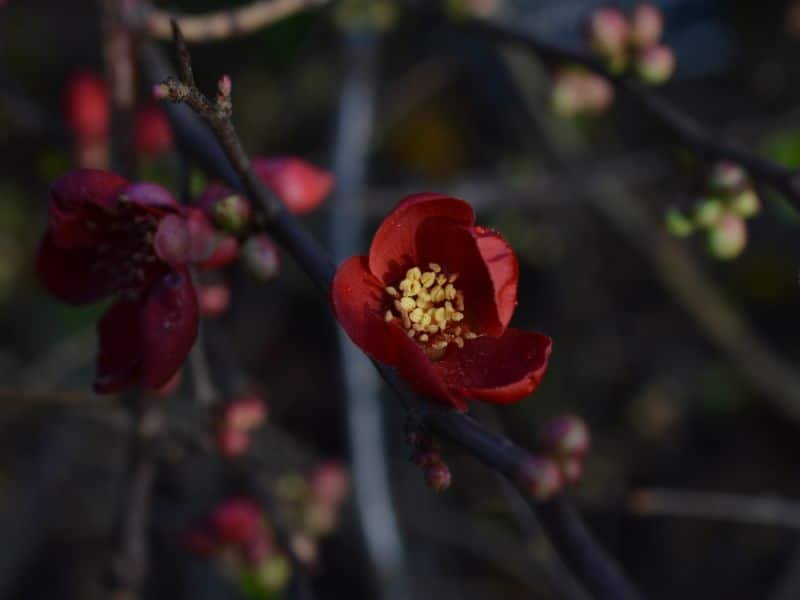
Welcome to the chapter dedicated to the cultivation and care of Chaenomeles × superba ‘Cameo.’ In this section, we delve into the essential aspects of planting and nurturing this charming plant to ensure its health and vibrancy in your garden.
Planting ‘Cameo’
Planting ‘Cameo’ is the first step toward bringing its enchanting beauty to your garden. Follow these guidelines for a successful start:
- Selecting the Right Location: Choose a well-drained spot that receives the appropriate amount of sunlight based on the insights from the previous chapter. Ensure that the soil is prepared according to ‘Cameo’s’ soil preferences.
- Digging the Hole: Dig a hole that is roughly the same depth as the plant’s root ball and twice as wide. This allows the roots to spread comfortably.
- Planting Depth: Place the plant in the hole at the same level it was previously growing. Avoid planting it too deep, as this can lead to root rot.
- Backfilling: Fill the hole with soil and press it down gently to remove air pockets. Water thoroughly after planting to settle the soil.
- Mulching: Apply a layer of mulch around the base of the plant to retain moisture and suppress weeds.
Pruning Tips
Proper pruning plays a pivotal role in the growth and flowering of ‘Cameo.’ Here are some key pruning techniques to ensure your plant thrives:
- Prune After Flowering: ‘Cameo’ blooms on old wood, so it’s best to prune it immediately after flowering, typically in late spring or early summer. This allows new growth to develop for the next season’s blooms.
- Remove Dead or Diseased Wood: Regularly inspect your plant for dead or diseased branches and promptly remove them. This helps maintain the plant’s overall health.
- Thinning Out: To encourage air circulation and reduce overcrowding, consider thinning out some of the older branches. This allows sunlight to penetrate the interior of the plant, promoting better flower production.
Disease and Pest Management
While ‘Cameo’ is a hardy shrub, it can occasionally encounter common garden pests and diseases. Here’s how to address these issues:
- Aphids: If you notice aphids on your ‘Cameo’ plant, a strong blast of water or insecticidal soap can help remove them. Ladybugs and lacewings are natural predators of aphids and can also assist in controlling their population.
- Fire Blight: This bacterial disease can affect ‘Cameo.’ Pruning infected branches well below the affected area and sterilizing your pruning tools can help manage this disease.
- Japanese Beetles: Handpick Japanese beetles if their numbers are manageable. In severe infestations, consider using traps or insecticidal sprays.
By following these cultivation and care tips, you’ll create an environment where Chaenomeles × superba ‘Cameo’ thrives and graces your garden with its stunning blossoms. Proper planting, pruning, and pest management are the keys to enjoying the full beauty of this exceptional shrub.
Creative Landscaping Applications
When it comes to landscaping with Chaenomeles × superba ‘Cameo,’ the possibilities are as varied as your imagination. In this chapter, we explore the creative ways you can incorporate this stunning plant into your garden design to elevate its visual appeal and charm.
Hedge Planting
One of the most popular uses of ‘Cameo’ is as a hedge plant. Its dense growth habit and beautiful blossoms make it an excellent choice for creating natural garden boundaries. Here’s how to make the most of ‘Cameo’ as a hedge:
- Spacing: Plant ‘Cameo’ shrubs close together, typically 2 to 3 feet apart, to encourage a dense hedge.
- Pruning: Regular pruning helps maintain the desired hedge shape and encourages more profuse flowering. Prune after the flowering season for the best results.
- Mixing Varieties: Consider mixing ‘Cameo’ with other Chaenomeles varieties to create a diverse and visually appealing hedge with varying flower colors and sizes.
Specimen Planting
If you want to showcase the beauty of ‘Cameo’ in all its glory, consider planting it as a specimen in your garden. This allows the plant to take center stage and become a focal point of your landscape design:
- Choosing the Right Location: Select a prominent spot in your garden where ‘Cameo’ can be admired from various angles. Ensure it receives the appropriate sunlight and complements the surrounding plants.
- Accent Lighting: Consider adding outdoor lighting to highlight your ‘Cameo’ specimen, especially during the evening. This enhances its visual appeal and makes it a standout feature.
- Complementary Plants: Plant ‘Cameo’ alongside other perennials or shrubs that complement its color palette and enhance its overall visual impact.
Garden Borders
To create eye-catching garden borders, ‘Cameo’ can be an excellent addition. Its low-growing habit and exquisite blooms make it a versatile choice for defining and beautifying garden edges:
- Mixing with Other Plants: Intersperse ‘Cameo’ shrubs with other flowering perennials or ornamental grasses to create dynamic and ever-changing garden borders.
- Color Coordination: Pay attention to color coordination when choosing companion plants. Harmonizing flower colors can create a more cohesive and visually appealing border.
- Edging Maintenance: Regularly trim and shape your ‘Cameo’ border to maintain its neat appearance and prevent it from encroaching on other garden elements.
By exploring these creative landscaping applications, you can harness the beauty of Chaenomeles × superba ‘Cameo’ to enhance the aesthetic appeal of your garden. Whether as a hedge, specimen plant, or border highlight, ‘Cameo’ brings an abundance of charm and elegance to your outdoor space.
Noteworthy Characteristics

As we delve deeper into the world of Chaenomeles × superba ‘Cameo,’ it’s time to uncover the noteworthy characteristics that set it apart as a truly remarkable plant. In this chapter, we’ll explore the distinctive features and attributes that make ‘Cameo’ a standout choice for gardeners.
Fruit Description
The fruit of Chaenomeles × superba ‘Cameo’ is a true marvel. While the plant’s blossoms steal the spotlight during the spring, its fruit adds a delightful twist to your garden as the seasons progress. Here’s what you need to know about its fruit:
- Shape and Size: The fruit of ‘Cameo’ typically resembles small apples or pears, with a round to slightly oblong shape. They are petite, usually measuring around 1 to 2 inches in diameter.
- Color Palette: These charming fruits come in various shades, including shades of yellow, golden, and sometimes-tinged with blushes of red. This spectrum of colors adds visual interest to your garden.
- Texture: When fully ripe, ‘Cameo’ fruits exhibit a slightly soft and velvety texture, making them a tactile delight. The skin may have a slight fuzziness.
- Edible Delights: While ‘Cameo’ fruits are technically edible, they are typically quite sour and tart when consumed fresh. However, they shine when used in culinary creations, especially in preserves, jams, jellies, and sauces.
Culinary Uses
The culinary potential of Chaenomeles × superba ‘Cameo’ is a hidden gem that gardeners and food enthusiasts alike can appreciate. Here’s how you can make the most of its fruit in the kitchen:
- Preserves: ‘Cameo’ fruit can be turned into delightful preserves and jams, thanks to its high pectin content. Combine it with other fruits for a unique flavor profile.
- Baking: Incorporate ‘Cameo’ fruit into your baking endeavors. From pies and tarts to muffins and bread, the tartness of the fruit complements sweet pastry creations.
- Sauces: Create tangy sauces that pair perfectly with meats and desserts. ‘Cameo’ fruit sauce can add a burst of flavor to your culinary creations.
- Infusions: Explore the world of homemade infusions by adding ‘Cameo’ fruit to spirits or vinegar. The result is a distinctive and flavorful ingredient for cocktails or salad dressings.
Unique Features
Beyond its fruit, Chaenomeles × superba ‘Cameo’ boasts several unique features that make it an intriguing addition to any garden:
- Winter Interest: ‘Cameo’ doesn’t shy away during the colder months. Its gnarled and contorted branches add a touch of winter beauty, making it a standout in the garden even when not in bloom.
- Wildlife Attraction: The nectar-rich blossoms of ‘Cameo’ are a favorite among pollinators, including bees and butterflies. By planting ‘Cameo,’ you can contribute to local biodiversity.
- Disease Resistance: This cultivar exhibits a good level of resistance to common diseases and pests, making it a low-maintenance choice for gardeners.
As you nurture Chaenomeles × superba ‘Cameo’ in your garden, take time to appreciate its unique characteristics. From its charming fruit to its culinary versatility and year-round beauty, ‘Cameo’ is a plant that continues to surprise and delight at every turn.
Conclusion
As we near the end of our exploration of Chaenomeles × superba ‘Cameo,’ it’s time to reflect on the key takeaways and the overall significance of this remarkable plant. In this chapter, we’ll summarize the essential points covered in this guide and emphasize the beauty, versatility, and sustainability that ‘Cameo’ brings to the world of gardening.
Recap of Key Takeaways
Before we bid farewell to ‘Cameo,’ let’s revisit the crucial insights you’ve gained throughout this guide:
- Taxonomy and Characteristics: You’ve delved into the botanical classification and physical attributes of ‘Cameo,’ gaining a deeper understanding of its origins and appearance.
- Growing Zones and Conditions: You’ve learned about the ideal USDA zones, sunlight requirements, soil preferences, and watering needs that ‘Cameo’ thrives in.
- Cultivation and Care: From planting guidelines to pruning techniques and disease management, you now have the knowledge to nurture ‘Cameo’ successfully.
- Creative Landscaping Applications: You’ve explored various ways to incorporate ‘Cameo’ into your garden, from hedge planting to enhancing garden borders.
- Noteworthy Characteristics: The unique fruit description, culinary uses, and other distinctive features of ‘Cameo’ have been unveiled.
The Beauty and Versatility of Chaenomeles × superba ‘Cameo’
As you’ve discovered throughout this guide, Chaenomeles × superba ‘Cameo’ is a plant that captivates with its elegance and charm. Its delicate pink blossoms herald the arrival of spring, while its fruit offers culinary creativity and visual interest. ‘Cameo’ is a versatile choice for gardeners seeking a plant that stands out in various garden applications.
Encouraging Sustainable Gardening Practices with ‘Cameo’
In an age where sustainability is paramount, Chaenomeles × superba ‘Cameo’ plays a role in promoting eco-friendly gardening. Its disease resistance and attractiveness to pollinators contribute to healthier garden ecosystems. By choosing ‘Cameo’ for your garden, you align with sustainable gardening practices that benefit both your surroundings and the environment.
As you embark on your journey with Chaenomeles × superba ‘Cameo,’ remember that gardening is not just about nurturing plants but also about fostering a deeper connection with nature. ‘Cameo’ invites you to be part of this beautiful symbiosis between gardener and garden, offering a glimpse into the wonders of the natural world.
In conclusion, whether you’re an experienced gardener or a novice, Chaenomeles × superba ‘Cameo’ adds a touch of elegance, flavor, and sustainability to your gardening endeavors. Embrace the beauty of ‘Cameo,’ and let it bloom in your garden, creating a haven of natural wonder and delight.
Additional Resources
In your journey to discover the wonders of Chaenomeles × superba ‘Cameo,’ it’s essential to have access to a wealth of knowledge and tips for successful cultivation.
Gardening Tips
To ensure your Chaenomeles × superba ‘Cameo’ thrives and flourishes, consider the following gardening tips:
- Regular Inspection: Periodically inspect your ‘Cameo’ plant for signs of disease, pests, or other issues. Early detection can prevent problems from escalating.
- Pruning Schedule: Follow a pruning schedule tailored to your ‘Cameo.’ This ensures proper growth and encourages prolific flowering.
- Pollinator-Friendly Gardening: Promote pollinator-friendly gardening practices by planting nectar-rich flowers alongside ‘Cameo.’ This not only benefits your garden but also supports local biodiversity.
- Mulching: Apply mulch around the base of your ‘Cameo’ plant to conserve soil moisture, suppress weeds, and maintain a stable root temperature.
- Companion Planting: Explore companion plants that complement ‘Cameo’ in terms of growth requirements and visual appeal. This can enhance the overall aesthetics of your garden.
Where to Find ‘Cameo’
If you’re eager to add Chaenomeles × superba ‘Cameo’ to your garden but are unsure where to find this delightful plant, consider the following guidance:
- Local Nurseries: Visit your local nurseries and garden centers. They often carry a variety of ornamental plants, including ‘Cameo.’
- Online Plant Retailers: Explore online plant retailers and specialty gardening websites. You can browse through a wide selection of plants and have ‘Cameo’ delivered to your doorstep.
- Gardening Communities: Connect with gardening enthusiasts and local gardening clubs. They may offer insights on where to source ‘Cameo’ in your area.
As you embark on your ‘Cameo’ gardening journey, remember that knowledge and resources are your greatest allies. By tapping into these additional resources and tips, you’ll be better equipped to cultivate a thriving and beautiful garden featuring Chaenomeles × superba ‘Cameo.’ Happy gardening!

Gardening is my passion and growing plants indoors has always been a stress relief for me. Grow a banana tree in my apartment once (although failed to produce bananas).





